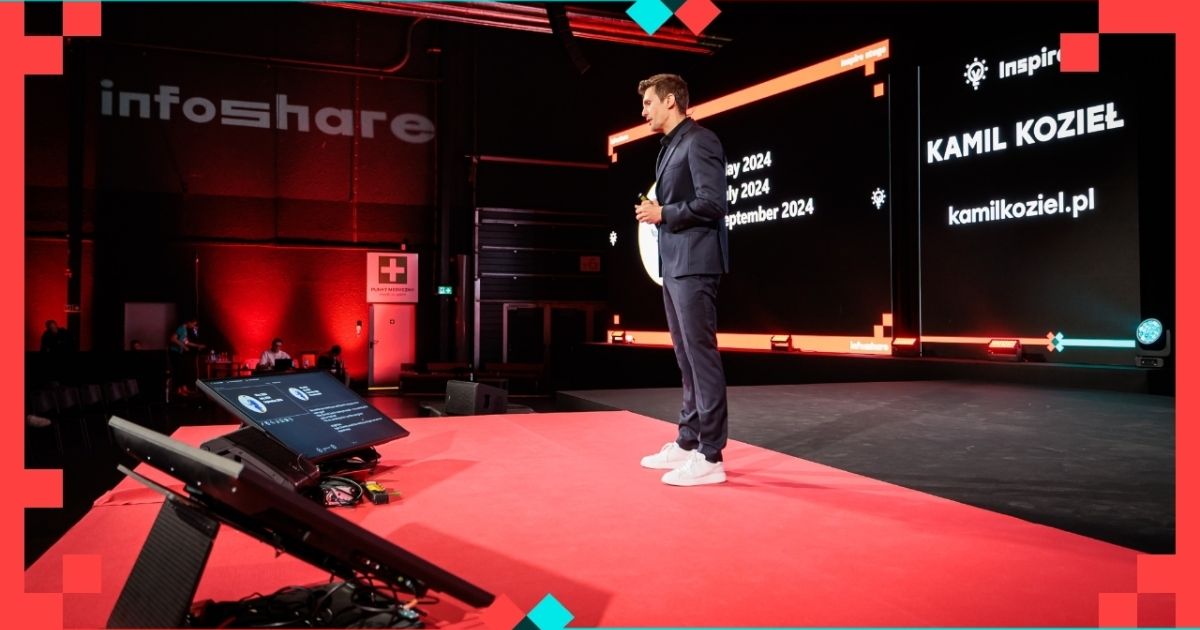VIEW SPEECH SUMMARY
What is Edutainment?
- Edutainment is a blend of education and entertainment, combining usefulness with engagement.
- It is applicable in many areas: social media, podcasts, public speaking, branding, and expert communication.
- Benefits include better knowledge retention, increased motivation to learn, and enhanced persuasion capabilities.
- Though difficult to create, successful edutainment pays off by building communities or educating effectively.
Key Principles of Edutainment
- To be effective, edutainment must meet three criteria:
1. Useful – the content provides valuable information.
2. Comprehensible – the content is easy to understand.
3. Entertaining – the content keeps the audience engaged and interested.
- The “Explain Like I’m 10” (ELI10) method helps simplify complex topics for broad audiences.
- Example: Docker explained as a “special fridge” with compartments to make it understandable and relatable.
Old vs. New Approaches to Edutainment Content
- Previously, combining education and entertainment required heavy effort, extensive expertise, and time-consuming manual work using storytelling frameworks.
- Popular frameworks included comedy, structured public speaking, and storytelling "periodic tables".
- Now, AI can automate this process: feeding transcripts into large language models (LLMs) and using system prompts to generate engaging versions.
- The presenter demonstrated this by creating a GPT-based avatar model based on his own public speaking course.
Using AI to Harness Popular Narrative Structures
- The presenter used the narrative style of Top Gear (Jeremy Clarkson) as an example of an engaging framework.
- Popular narratives evoke curiosity through structured storytelling patterns that can be adapted to new topics.
- AI can analyze and recreate these narrative frameworks quickly without requiring expert manual deconstruction.
Examples and Demonstrations
- A fully AI-generated Clarkson-style car review was shared to illustrate how convincingly AI can mimic entertaining content styles.
- Dominic Borsa created a GPT model of the presenter’s public speaking course, proving the ease of encapsulating expert knowledge in AI models.
- Polls show AI-powered professionals may outperform traditional experts in content and narrative creation.
Practical Advice and Warnings
- When creating AI-generated content or personal narrative styles, always test the output by speaking it aloud to ensure natural flow and avoid artificial-sounding results.
- Content creation still requires active participation and fine-tuning, just like physical training (e.g., running faster requires practice, not just equipment or tips).
- Ethical and intellectual property (IP) considerations are unclear and require further exploration.
- Curiosity is a driving force behind experimentation with new AI tools and creative processes.
Actionable Items
- Use the ELI10 method to simplify complex topics and improve audience comprehension.
- Leverage AI tools like ChatGPT to convert educational content into entertaining formats by:
- Transcribing your content.
- Uploading it into an LLM.
- Asking the LLM to build structured knowledge and apply system prompts.
- Explore popular narrative frameworks (e.g., Top Gear style) and use AI to adapt them for your content.
- Always review and rehearse AI-generated content to ensure it sounds natural.
- Stay aware of ethical and IP issues related to AI content creation and seek expert advice as needed.
- Embrace curiosity to experiment with AI-enhanced storytelling and content creation.
Conclusion
- AI dramatically lowers barriers to creating compelling edutainment content quickly.
- Combining education, storytelling frameworks, and AI is the future of engaging knowledge sharing.
- Success depends on usefulness, clarity, entertainment, and human oversight in final delivery.
- Edutainment is a blend of education and entertainment, combining usefulness with engagement.
- It is applicable in many areas: social media, podcasts, public speaking, branding, and expert communication.
- Benefits include better knowledge retention, increased motivation to learn, and enhanced persuasion capabilities.
- Though difficult to create, successful edutainment pays off by building communities or educating effectively.
Key Principles of Edutainment
- To be effective, edutainment must meet three criteria:
1. Useful – the content provides valuable information.
2. Comprehensible – the content is easy to understand.
3. Entertaining – the content keeps the audience engaged and interested.
- The “Explain Like I’m 10” (ELI10) method helps simplify complex topics for broad audiences.
- Example: Docker explained as a “special fridge” with compartments to make it understandable and relatable.
Old vs. New Approaches to Edutainment Content
- Previously, combining education and entertainment required heavy effort, extensive expertise, and time-consuming manual work using storytelling frameworks.
- Popular frameworks included comedy, structured public speaking, and storytelling "periodic tables".
- Now, AI can automate this process: feeding transcripts into large language models (LLMs) and using system prompts to generate engaging versions.
- The presenter demonstrated this by creating a GPT-based avatar model based on his own public speaking course.
Using AI to Harness Popular Narrative Structures
- The presenter used the narrative style of Top Gear (Jeremy Clarkson) as an example of an engaging framework.
- Popular narratives evoke curiosity through structured storytelling patterns that can be adapted to new topics.
- AI can analyze and recreate these narrative frameworks quickly without requiring expert manual deconstruction.
Examples and Demonstrations
- A fully AI-generated Clarkson-style car review was shared to illustrate how convincingly AI can mimic entertaining content styles.
- Dominic Borsa created a GPT model of the presenter’s public speaking course, proving the ease of encapsulating expert knowledge in AI models.
- Polls show AI-powered professionals may outperform traditional experts in content and narrative creation.
Practical Advice and Warnings
- When creating AI-generated content or personal narrative styles, always test the output by speaking it aloud to ensure natural flow and avoid artificial-sounding results.
- Content creation still requires active participation and fine-tuning, just like physical training (e.g., running faster requires practice, not just equipment or tips).
- Ethical and intellectual property (IP) considerations are unclear and require further exploration.
- Curiosity is a driving force behind experimentation with new AI tools and creative processes.
Actionable Items
- Use the ELI10 method to simplify complex topics and improve audience comprehension.
- Leverage AI tools like ChatGPT to convert educational content into entertaining formats by:
- Transcribing your content.
- Uploading it into an LLM.
- Asking the LLM to build structured knowledge and apply system prompts.
- Explore popular narrative frameworks (e.g., Top Gear style) and use AI to adapt them for your content.
- Always review and rehearse AI-generated content to ensure it sounds natural.
- Stay aware of ethical and IP issues related to AI content creation and seek expert advice as needed.
- Embrace curiosity to experiment with AI-enhanced storytelling and content creation.
Conclusion
- AI dramatically lowers barriers to creating compelling edutainment content quickly.
- Combining education, storytelling frameworks, and AI is the future of engaging knowledge sharing.
- Success depends on usefulness, clarity, entertainment, and human oversight in final delivery.
Edutainment AI: The most entertaining way to be taken seriously
17:05 - 17:25, 27th of May (Tuesday) 2025 / INSPIRE STAGE
What do Nike, Duolingo, Apple, Michał Sadowski, Amy Porterfield, Michał Wrzosek, and Emily Calandrelli have in common?
They all use edutainment – a powerful blend of education and entertainment that’s more persuasive and engaging than traditional ways of sharing knowledge.
Edutainment is like math – it’s useful for, well… pretty much everything. In social media, podcasts, organizational leadership, and marketing.
Until recently, implementing edutainment in business required a massive investment of time and money.
Thanks to AI, this once-complicated process has become much simpler.
In this talk, I’ll show you how to compress a decade of work into a year… or even just a few months.
TRACK:
AI/ML
Business & Tech trends
Tech4Good



